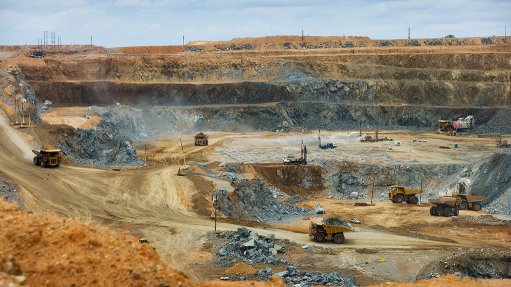
MOGALAKWENA The mine is the lowest-cost producer of platinum-group metals in the world, generating an operating-free cash flow of R10-billion over 5.5 years
Mining companies should consider more carefully the way in which they operate to ensure that mineworkers are out of harm’s way, says resource consultancy VCI partner Gideon Malherbe, adding that embracing new and better mining methods, particularly mechanisation and automation, is the only real structural answer to a safe and low-cost mining system.
He cites platinum miner Anglo American Platinum’s (Amplats’) Mogalakwena openpit mine, in Limpopo, as the “sector’s leader in forward-leaning mining development”, as production at the mine “shows the value of pursuing advanced technology solutions to mining challenges”. The mine has an ore resource of 1.1-billion tons and produces 11-million tons of platinum a year.
Amplats reported last month that the average daily tons mined at the operation, which has been mechanised since inception, increased by 79%, to 297 t, in the fourth quarter of 2014, compared with the average daily tons mined in the first quarter of that year.
The dramatic increase in production can be attributed to the ramp-up after the five-month-long platinum-sector strike, organised by the Association of Mineworkers and Construction Union, which stalled South African platinum production last year.
Mogalakwena is the lowest-cost producer of platinum-group metals (PGMs) in the world and has generated an operating- free cash flow of R10-billion over 5.5 years at margins of up to 40%.
Malherbe notes that, despite the economic success of Mogalakwena, the majority of platinum mines are still labour intensive, which raises safety concerns, owing to the significant amount of human involvement in mining activities.
“Technology has progressed to a point where we can use autonomous equipment instead of humans without endangering any lives.”
Further, he states that the costs of efficiently operating labour-intensive shafts are “beyond the time and social parameters of a modern mining industry. People cannot be expected to work even harder in the current underground mining conditions”.
Malherbe points out that European and US mining houses are considering the development of digital intensity measurement technology to gauge mining productivity. However, some PGM producers are still focused on resolving labour-intensity challenges, further impacting on mine safety. He attributes this to the focus of PGM producers on improving worker safety, instead of trying to limit the number of people exposed to dangerous structures and equipment underground.